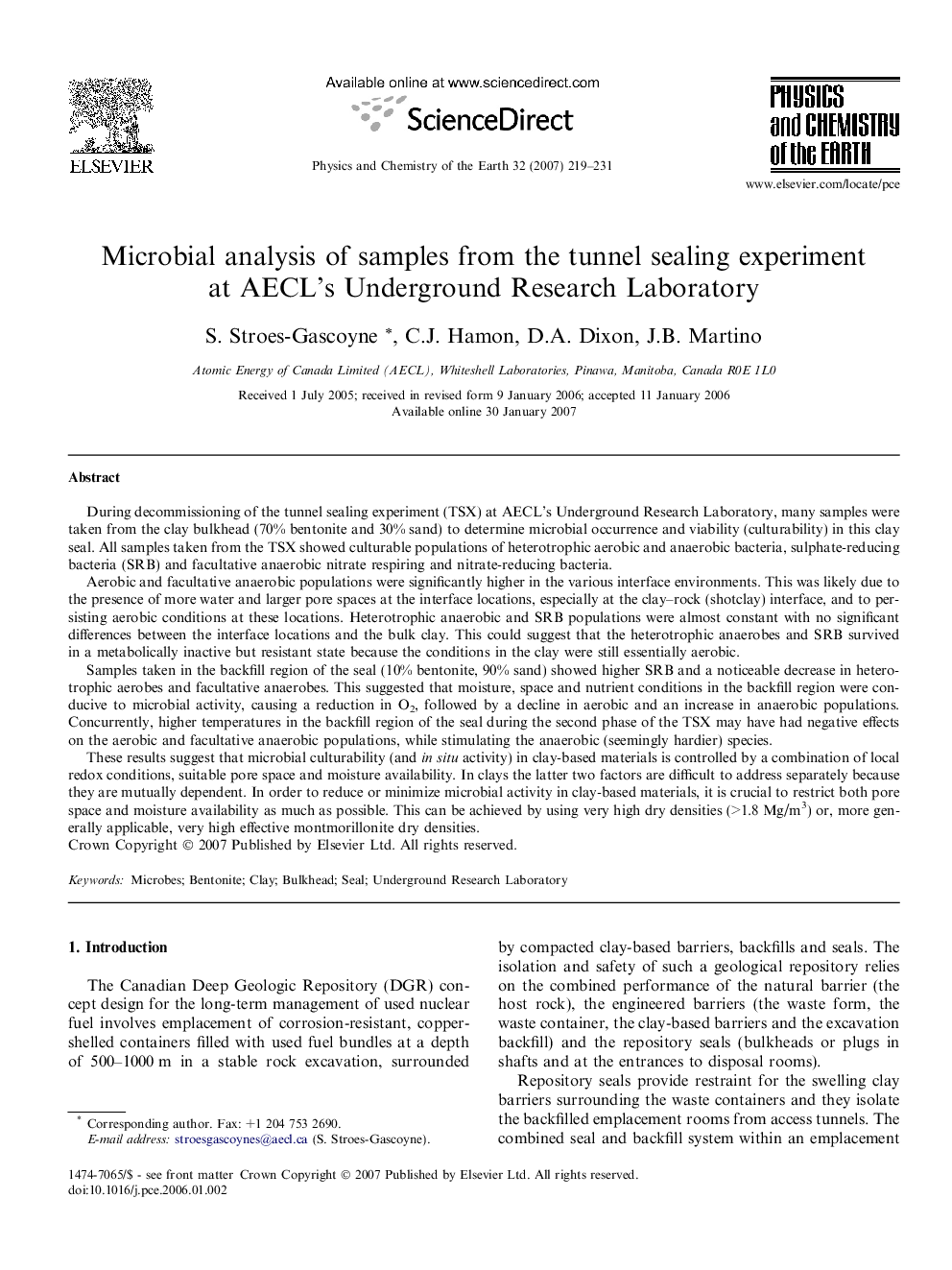| کد مقاله | کد نشریه | سال انتشار | مقاله انگلیسی | نسخه تمام متن |
|---|---|---|---|---|
| 4721923 | 1639405 | 2007 | 13 صفحه PDF | دانلود رایگان |

During decommissioning of the tunnel sealing experiment (TSX) at AECL’s Underground Research Laboratory, many samples were taken from the clay bulkhead (70% bentonite and 30% sand) to determine microbial occurrence and viability (culturability) in this clay seal. All samples taken from the TSX showed culturable populations of heterotrophic aerobic and anaerobic bacteria, sulphate-reducing bacteria (SRB) and facultative anaerobic nitrate respiring and nitrate-reducing bacteria.Aerobic and facultative anaerobic populations were significantly higher in the various interface environments. This was likely due to the presence of more water and larger pore spaces at the interface locations, especially at the clay–rock (shotclay) interface, and to persisting aerobic conditions at these locations. Heterotrophic anaerobic and SRB populations were almost constant with no significant differences between the interface locations and the bulk clay. This could suggest that the heterotrophic anaerobes and SRB survived in a metabolically inactive but resistant state because the conditions in the clay were still essentially aerobic.Samples taken in the backfill region of the seal (10% bentonite, 90% sand) showed higher SRB and a noticeable decrease in heterotrophic aerobes and facultative anaerobes. This suggested that moisture, space and nutrient conditions in the backfill region were conducive to microbial activity, causing a reduction in O2, followed by a decline in aerobic and an increase in anaerobic populations. Concurrently, higher temperatures in the backfill region of the seal during the second phase of the TSX may have had negative effects on the aerobic and facultative anaerobic populations, while stimulating the anaerobic (seemingly hardier) species.These results suggest that microbial culturability (and in situ activity) in clay-based materials is controlled by a combination of local redox conditions, suitable pore space and moisture availability. In clays the latter two factors are difficult to address separately because they are mutually dependent. In order to reduce or minimize microbial activity in clay-based materials, it is crucial to restrict both pore space and moisture availability as much as possible. This can be achieved by using very high dry densities (>1.8 Mg/m3) or, more generally applicable, very high effective montmorillonite dry densities.
Journal: Physics and Chemistry of the Earth, Parts A/B/C - Volume 32, Issues 1–7, 2007, Pages 219–231